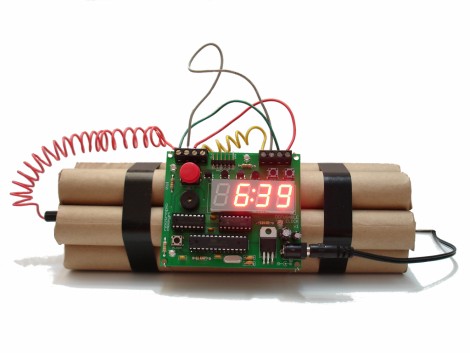It’s been a few weeks since the incident where Ahmed Mohamed, a student, had one of his inventions mistaken for a bomb by his school and the police, despite the device clearly being a clock. We asked for submissions of all of your clock builds to show our support for Ahmed, and the latest one is the tiniest yet but still has all of the features of a full-sized clock (none of which is explosions).
[Markus]’s tiny clock uses a PIC24 which is a small yet powerful chip. The timekeeping is done on an RTCC peripheral, and the clock’s seven segment displays are temporarily lit when the user presses a button. Since the LEDs aren’t on all the time, and the PIC only consumes a few microamps on standby, the clock can go for years on a single charge of the small lithium-ion battery in the back. There’s also a phototransistor which dims the display in the dark, and a white LED which could be used as a small flashlight in a pinch. If these features and the build technique look familiar it’s because of [Markus’] tiny MSP430 clock which he was showing around last year.
Both of his tiny clocks are quite impressive for their size, features, and power consumption. Some of the other clocks we’ve featured recently include robot clocks, clocks for social good, and clocks that are not just clocks (but still won’t explode). We’re suckers for a good clock project here, so keep sending them in!






















